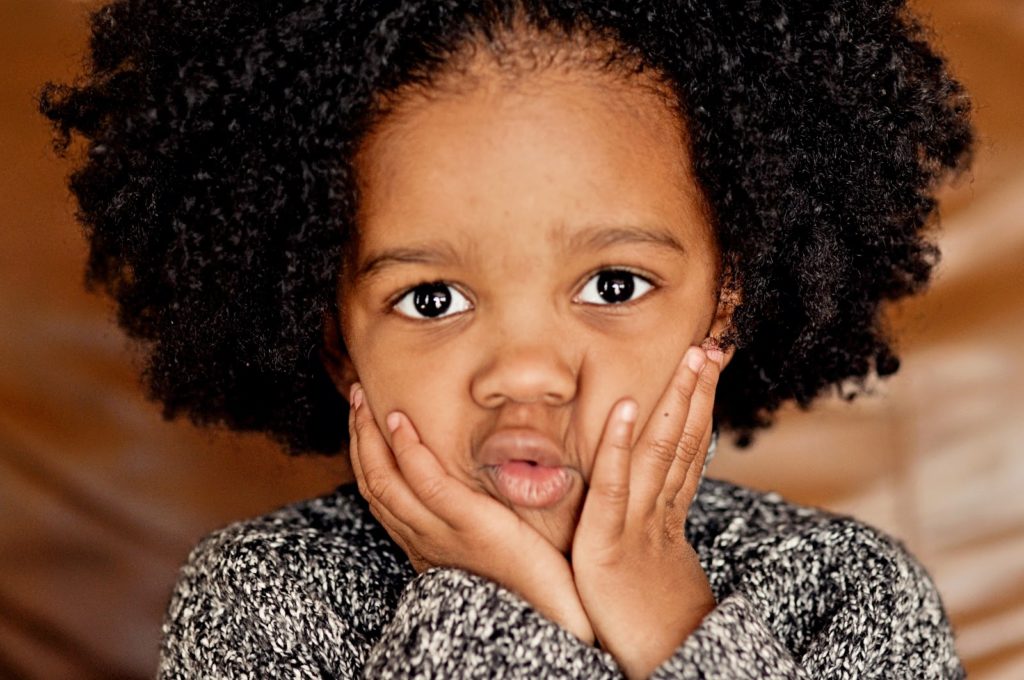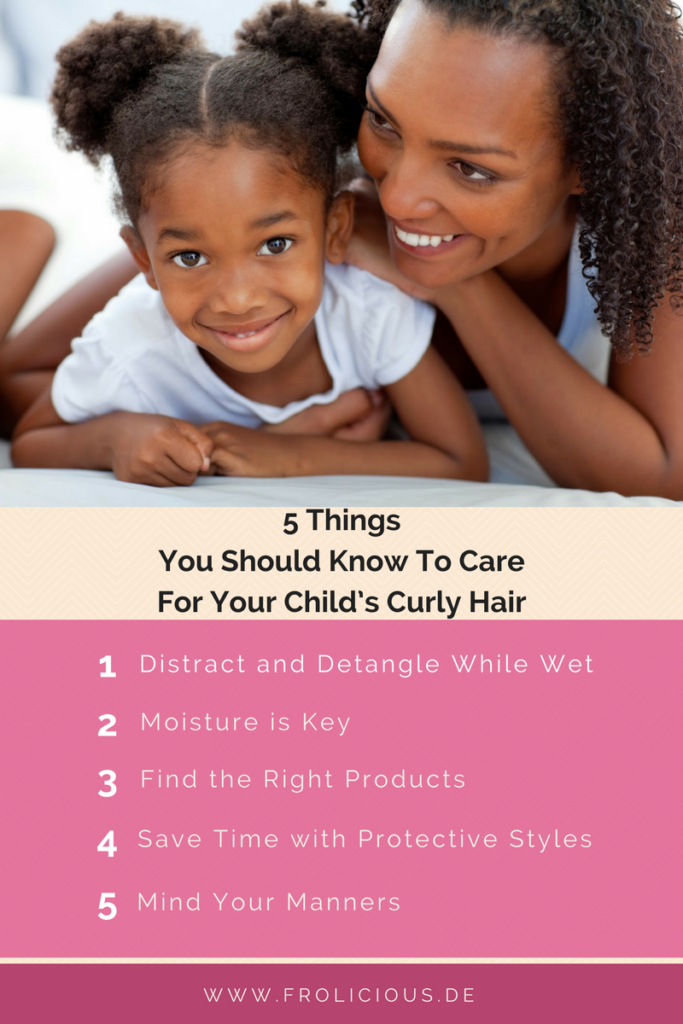So your child’s curls seem to have a life of their own. One day they coil into the perfect ringlets and the next day they stand on end – looking like they’ve been electrocuted! Some of the curls may even differ throughout their head; with big, loose curls framing their face, to tighter coils and kinks at the nape of the neck, and undefined, frizzier curls towards the back of the head that tangle themselves into a matted mess. How do you manage those curly locks of love? Below are 5 things you should know to care for your child’s curly hair.
5 Things You Should Know To Care For Your Child’s Curly Hair
1. Distract and Detangle While Wet
Never brush or comb your child’s curly hair while it’s dry. You’ll cause too much shedding, and not to mentioned – it’s painful! Detangle your child’s hair during a movie or during bath time to distract them. If you’re detangling during a movie, keep a water bottle nearby to wet the hair. Use a wide-tooth comb or a good detangling brush, such as the Denman brush or Tangle Teaser. I find that finger detangling during bath time works best. Before I finger detangle in the bath, I let the conditioner absorb into the hair for a few minutes. This makes finger detangling even easier as it increases the slippage and minimizes knots, tangles and pain.
2. Moisture is Key
Use a moisturizing shampoo and conditioner or co-wash to care for your child’s curly hair. Curly hair thrives on moisture, so retain as much of it as possible. After you wash your child’s hair, apply a moisturizing cream and/or light styling gel that will define curls and tackle frizz. Your child’s curls should be soft and defined. If their curls are left with a hard texture and are flakey, then you’re using the wrong gel. To refresh curls the next day, use a curl refresher spray or keep a water bottle mixed with a carrier oil (coconut oil, jojoba oil, sweet almond oil) nearby. I mix my water bottle with jojoba oil and lavender essential oil.

3. Find the Right Products
I personally use coconut oil on my hair. However, it’s too heavy for my son’s 3c/4a curly hair. I use jojoba oil, which is the most similar to the natural oil (sebum) produced from your skin and doesn’t weigh down your hair. Find the right styling products for your child. Use a light styling cream, gel or milk to moisturize and enhance your child’s curl pattern. You may have to test out some products. If available in your area, subscription-based boxes are a great way to test new products without spending a lot of money. In the long-end, you’ll spend less money on the monthly subscription box fees versus purchasing the full-size bottles of different brands. You may also find that as your child’s hair texture changes as they grow and develop, your products will also need to change in order to care for your child’s curly hair.
Stay away from heavy oils, sprays or petroleum and mineral-oil based greases. These oils clog pores and hair follicles, prevent hair growth and weigh down curls.
4. Save Time with Protective Styles
Brushing or combing your child’s curls too much can lead to breakage and may be the reason why your child’s hair doesn’t grow. You want to minimize manipulating their hair. Keep their hair in a braided updo, twists or braids to keep the ends secure. Make sure the hair is well moisturized before putting it into a protective style. If you’re using rubber hair elastics, try soaking them in coconut oil or extra virgin olive oil. Hair bands tend to be dry so the last thing you want to do is secure your child’s hair with a dry hair elastic that will cause breakage. At night, pineapple their hair if it’s not in a protective style. Sleeping on a satin scarf, bonnet or pillow case will also minimize hair breakage. Be extra careful with protective hair styles that pull and cause too much stress around your child’s edges. Your child’s edges are the most fragile section. If braids are installed too tightly, they can cause breakage and even permanent hair loss.
Don’t keep protective styles in for too long. The hair will begin to matt and dread, leaving you with more detangling work than you started off with.
5. Mind Your Manners
Words have a lasting effect. This may seem obvious, but watch what you say about your child’s hair when they are present. I can still remember comments of my hair as a child. And everyone I’ve spoken to can remember at least one occasion where an adult criticized their hair, or complimented someone else’s straight or loosely curled hair in their presence. The media often admires loosely curled hair over tightly coiled or kinkier hair texture. With so much to already protect our children from, don’t add into the negative messaging. Strengthen their self-esteem and use positive words when washing, detangling and caring for their hair.
///
What is your child’s hair routine? How do you care for your child’s curly hair? Please leave your comments below. I’d love to know!!
PLEASE PIN

Guest post by www.divinecurls.de





